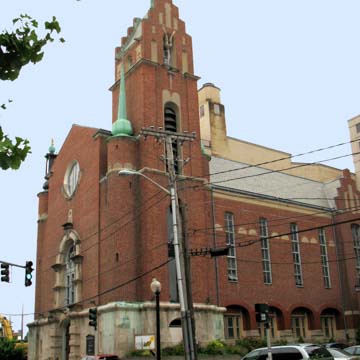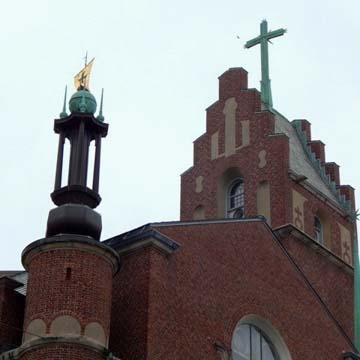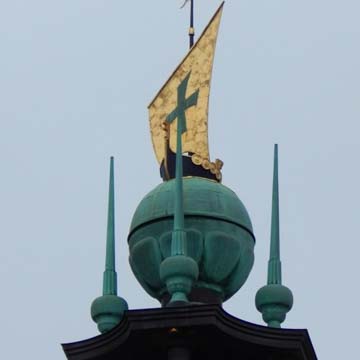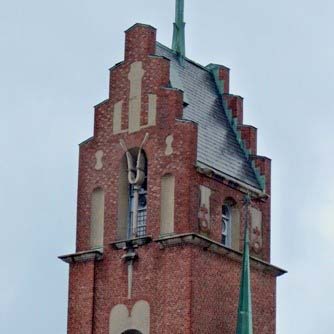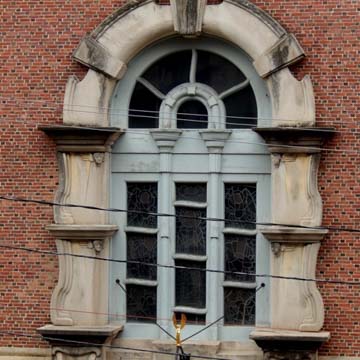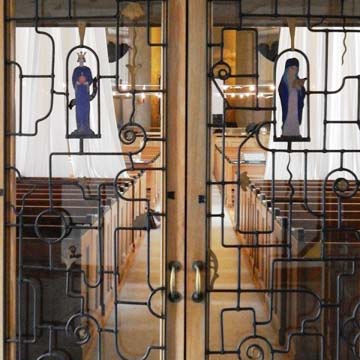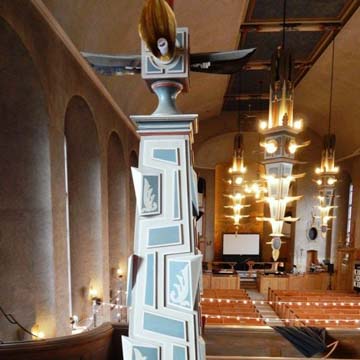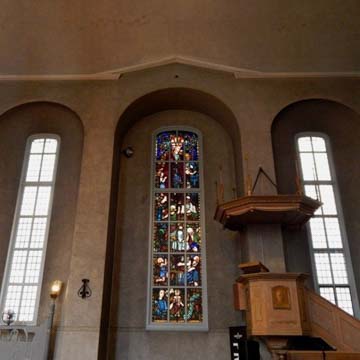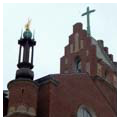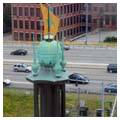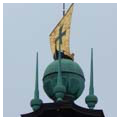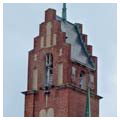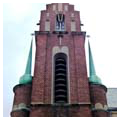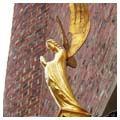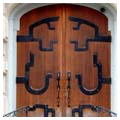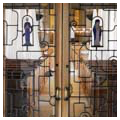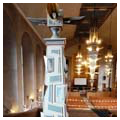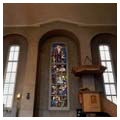Gloria Dei is unique in Providence. Built for a primarily Scandinavian congregation, it was designed by Martin Hedmark, a Swedish emigré, who arrived in the United States in 1923 with Gloria Dei as his first commission. It is one of the best of a number of churches he designed, mostly for Swedish Lutheran congregations. Its style is most simply described as Swedish Moderne, a national variant of international Art Deco or Art Moderne, for which the native designation is the Swedish National Romantic style. It is most prominently exemplified by two of Stockholm's landmarks, the City Hall (1911–1923) and Engelbrecht Church (1906–1914), on the latter of which Hedmark assisted. Gloria Dei's shaped forms in brick with limestone trim are meant to recall a famous Swedish castle, Gripsholm, in a free, decorative adaptation of its style and some of its motifs. The exterior is dominated by three towers: one with an onion dome, one with a spire, and the largest square-shaped to a stepped gable (somewhat in the manner of Austrian architect Joseph Maria Olbrich's tower for the Darmstadt Exhibition Hall).
Inside, the plaster walls of a boxy space are relieved by the semi-oval-plan apse, subtly echoed by curved walls to the arched inset windows, curved recesses to suggest transepts, and a cove molding from walls to flat ceiling. The craftsman's touch is conspicuous. The painted wooden chandeliers are aggressively sculptural as pendant, inverted obelisks from which stacks of gilded wings extend out of the four faces to symbolize the spread of the gospel by the four evangelists, each with a winged and flaming disk as the climactic eye of God. The wooden altar furniture is also exceptional. Chunky stained glass mingles with clear glass in the windows. All culminates in a mural by Newport
Hedmark, who seems to have moved about, lived in Newport during the early 1950s, where he designed another Lutheran church. Record of the impressive proposed interior exists in a pamphlet on Gloria Dei, but the Newport church was never built. Churches erected by Swedish congregations are more numerous than one might expect in Rhode Island. This, the largest and most impressive Swedish-inspired church in the state, contrasts with the small, plainly carpentered buildings usually found in the neighborhoods of machine tool factories, to which highly skilled Swedish tool makers gravitated. Downhill of Gloria Dei and the State House were the former sites of the American Screw Company, to the east, and the Brown and Sharpe Machine Tool Company, to the west. Both ranked among the largest producers in their respective industries. Both have vanished from Providence: American Screw absorbed into another corporation, Brown and Sharpe to a smaller suburban plant in southern Rhode Island, the scope of its production reduced to a specialty within the broad spectrum of machine tool design that it once commanded. Its cast-off complex remains (see next entry). The vacated quarters of American Screw were, except for a peripheral building, lost to arson in the 1970s, even as the complex was slated for conversion to commercial and apartment use.






